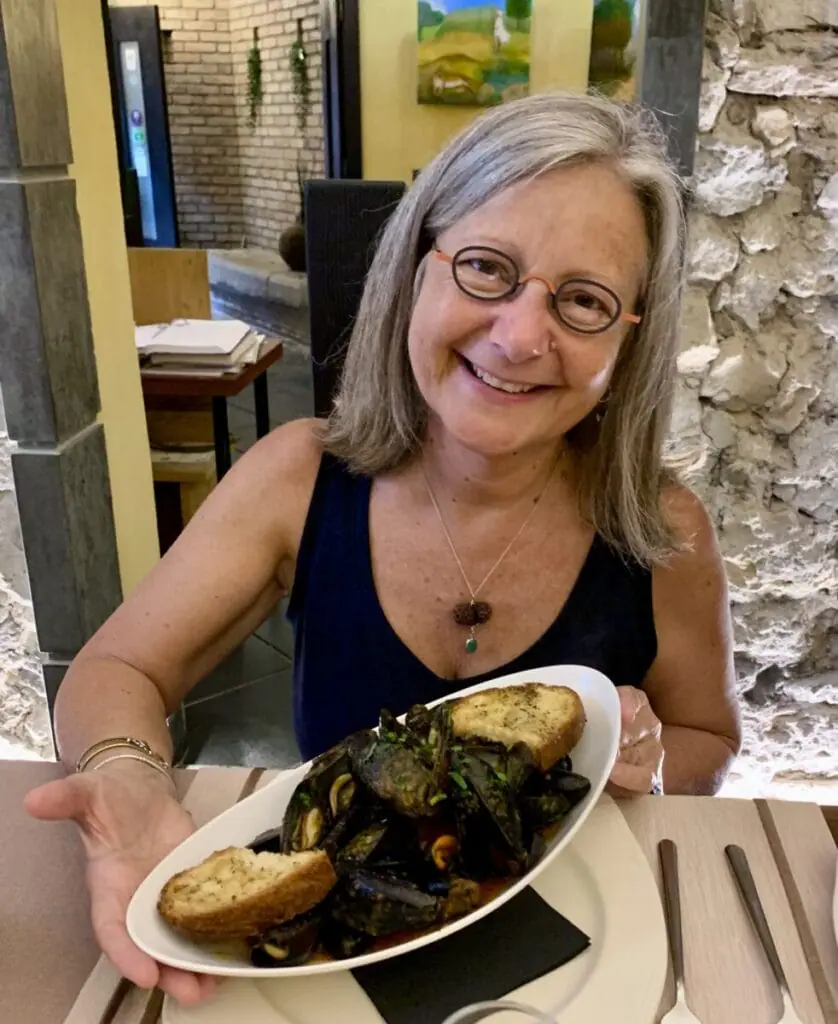In this series, we're sitting down with Swette Center affiliated faculty to catch up on food systems, innovation, and what makes a good meal. See the rest of the series on our Faculty Profiles page.
Read on for an interview with Ilaria Tabusso-Marcyan, Assistant Teaching Professor in the School of International Letters and Cultures.

How did you become interested in food systems?
My interest started during my doctoral degree, when I was writing my dissertation. My research focused more on the literature and the culture of the Resistance in Italy during World War II, and how the peasants were collaborating with the partisans in not only fighting for the Resistance, but also hiding them and feeding them. Until 1950, more than half of the population in Italy were peasants. Italy is famous for their cities, but the majority of the population lived in the countryside.
So the idea was to uncover more details about this culture in regards to agriculture and food practices, and how the Italian landscape has been shaped by farming. This naturally led to an interest in food systems. From there, I started to explore more in a comparative way how Italian food culture has influenced - directly and indirectly - other Western food cultures, including the Mediterranean lifestyle and diet. I also studied how Italy, through the international Slow Food movement, was one of the first countries to address the necessity of local, seasonal, and fresh produce. Unfortunately, this food is not always as accessible as it should be, which is why I’m working more and more on food systems.
Can you share a glimpse of your current research and how it applies to food systems transformation?
I'm looking into the circular economy from a food systems perspective. I'm focusing on how younger generations are able to apply this innovative approach into food systems, their lives, and in their businesses. I'm currently looking into what is happening in Italy with a group of young people who are actually putting these ideas of circular economy into practice. They're taking control of the whole food production and distribution, and they're doing it in a very ethical way. I really think that this is an incredible example that we can use. They bought the land and they sell the products of their land in their store in the city. They are paying everyone fairly. There is no exploitation to any level. They’ve been doing this over the course of maybe five to six years. They are missing some pieces, but they're working towards being completely autonomous. It's very inclusive; everybody has a say and everybody loves what they're doing. They're making happy workers and they're making the land happier.
What's an innovation in food systems that you're excited about?
I’m excited about agroecology because I think it has the potential to save us on multiple levels by combining traditional agricultural knowledge with natural, holistic practices. This is a way to push back on climate change because it is not polluting, and it really does offer an amazing abundance. Agroecology unites scientific knowledge with holistic knowledge in a way that is much more harmonious and balanced in comparison to compartmentalized research and education. I think now is the time to build more bridges between these different ways of knowing.
Another concept that fascinates me is the circular economy, especially when considering the industrial food system and how far food travels just to meet our needs and desires. Circular economies, when done correctly, really revive local economies and local food traditions. It emphasizes using resources efficiently, from start to finish, creating a final product that is more sustainable.
What’s your favorite weeknight meal?
My weekday fast dinner is spaghetti al peperoncino, which would be spaghetti with olive oil, garlic, chili, and crushed pepper, sauteed with a nice mixed salad with some tomatoes, olives, and any other vegetables. I also love to cook salmon with olives and capers, which is always very good. That is also one of my favorites, with baked potatoes and a salad on the side. But Indian food is number one. I can make chicken with chana dal, and I love it.